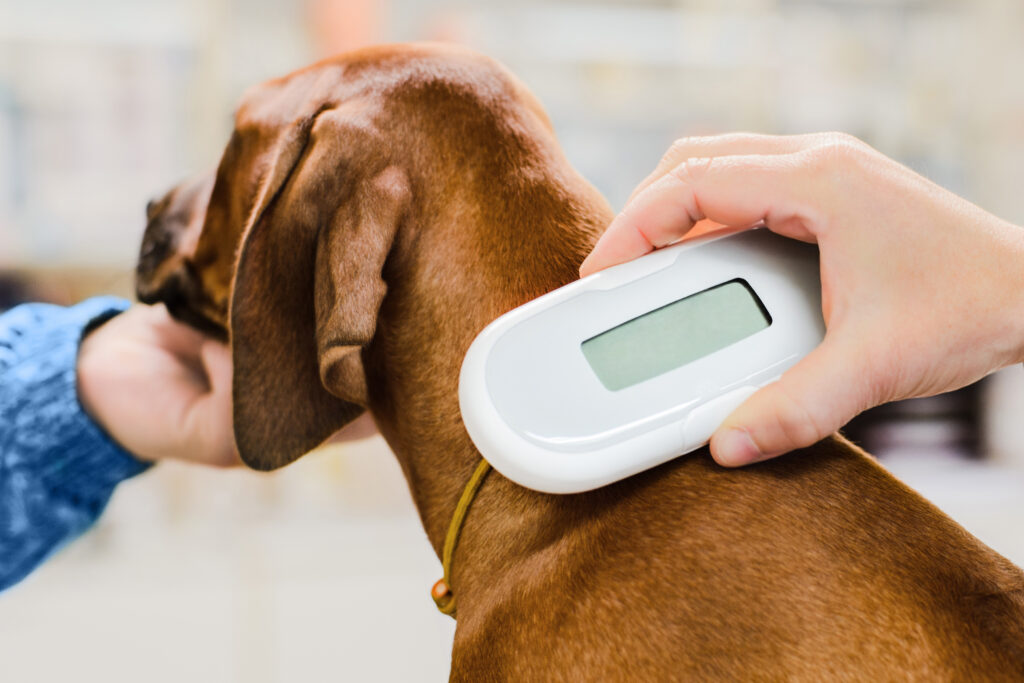
Let’s be honest—our dogs aren’t just pets. They’re part of our family, our best friends, our snuggly companions during movie marathons and adventure buddies on muddy trails. They’re the wagging tails that greet us at the door, the soft snores we fall asleep to, and the reason our camera rolls are 90% dog photos. So when it comes to keeping them safe, it only makes sense to do everything we can. That’s where microchipping comes in.
If you’ve ever heard of microchipping but weren’t quite sure what it’s all about, or if you’re on the fence about whether your pup really needs it—then we aim to bust myths and help you on the microchipping journey. Grab a cuppa and a biscuit, and maybe a LD treat for your dog too, and let’s talk about why microchipping your dog might be one of the smartest decisions you’ll ever make.
What Exactly Is a Microchip?
No, it’s not a GPS tracker (a common misconception!). A microchip is a tiny electronic chip, about the size of a grain of rice, that’s implanted under your dog’s skin—usually between the shoulder blades. It contains a unique ID number that’s registered to your contact information in a pet recovery database.
These tiny, amazing devices are so effective it is now a legal requirement here in the UK to ensure your dog is microchipped. If buying a new puppy, it is the breeders responsibility to ensure your new bundle of joy is chipped before they are sold (usually at round 8 weeks old), you will just need to update the information once you are home.
Veterinarians and animal shelters have handheld scanners that can read this chip. If your dog ever gets lost and ends up with a good Samaritan or in a shelter, a quick scan can bring them back home to you. It’s like your dog carrying their own invisible ID tag—one that can’t fall off, get chewed up, or lost while on an adventure.
Collars and Tags Are Great, But…
We love a good dog tag. They’re cute, they jingle, and they often come with a pun or a little sparkle. But they can also fall off. Collars can slip. Tags can become scratched or unreadable.
A microchip is permanent. It won’t wear out or disappear. It’s there for life, and as long as you keep your contact information updated, it gives your four-legged friend the best chance of making it back home to your arms.
Peace of Mind, All Day Every Day
Even though we are ever vigilant over our furry friend, sometimes things happen, the postman leaves the gate open or they sneak out of an open door and just like that, our pup is suddenly on an adventure without their trusted hooman. After frantically searching, the phone rings, a curious pup has been found and scanned – your nightmare has a happy ending.
Microchipping is like an invisible safety net. You might never need it (fingers crossed!), but if you do, you’ll be forever thankful it’s there. It’s a small act with potentially life-saving consequences.
It’s Fast, Safe, and Practically Painless
The process of microchipping is quick and easy. It’s often done during a regular vet visit and takes just a few seconds. It’s no more painful than a vaccine injection, and most dogs barely notice it happened. No surgery, no downtime—just one tiny poke and a big sigh of relief.
Plus, microchips are made to last. Once it’s in, it’s in for good. No maintenance required!
Help Your Dog Help Themselves
Dogs can’t explain that they are lost to strangers, where they live or give someone your phone number. A microchip is your dog’s voice when they can’t speak for themselves. It’s a silent hero hidden just beneath the surface, ready to save the day if it ever needs to.
Update That Chip!
One final (but super important!) note: microchips only work if your contact information is current. So if you move, change your phone number, or even just want to add a secondary contact, don’t forget to update the database such as Petlog or Identibase.
It’s a good idea to check once a year—maybe around your dog’s birthday—to make sure all the info is up to date.
Microchipping isn’t just a smart move—it’s a loving one. It’s a quiet way to say “I’ll always come for you” to your dog, no matter where they end up. And while we hope your pup never wanders far, having that tiny chip means the story doesn’t have to end in heartbreak.


